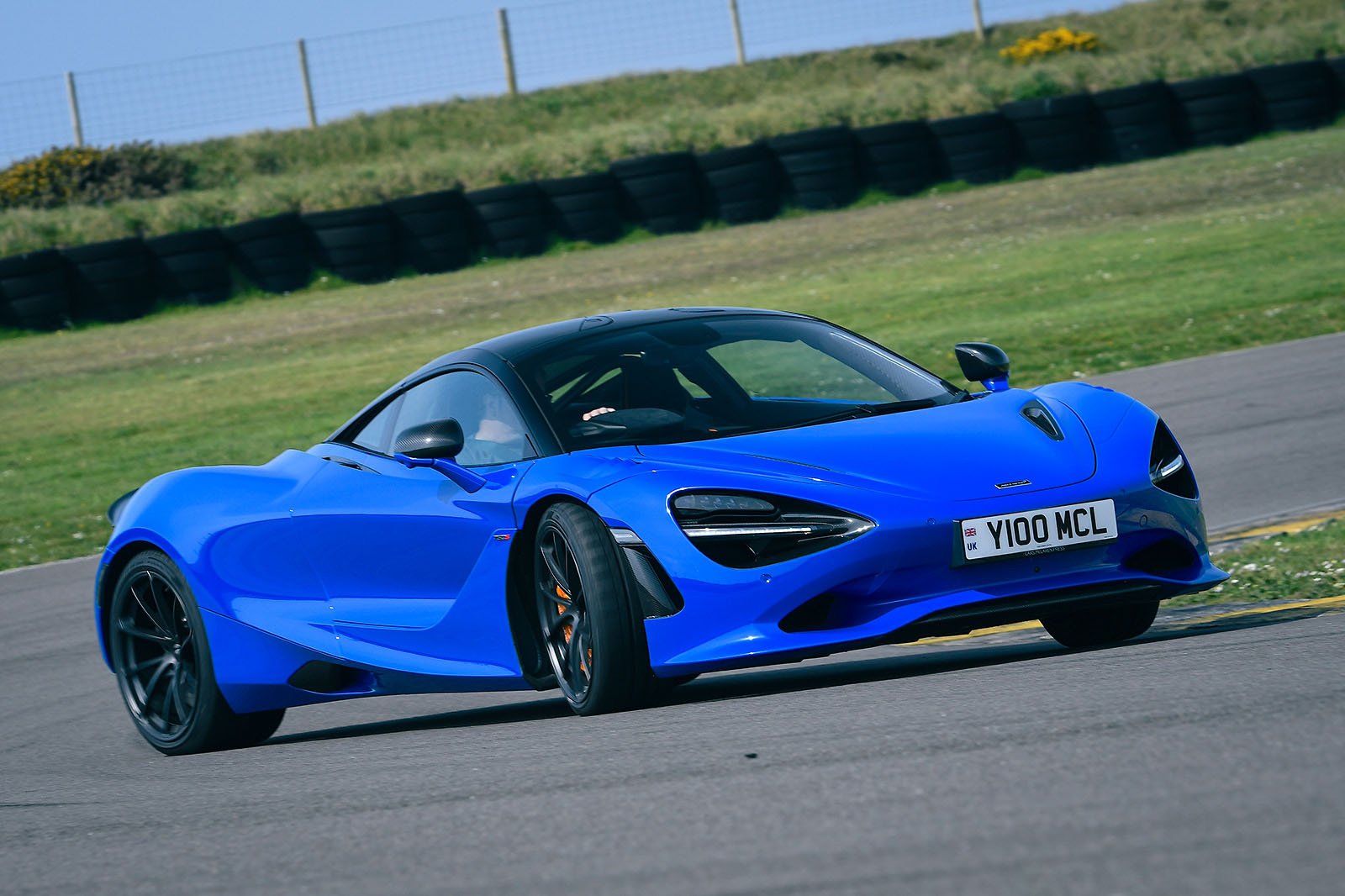Here we are again, debating the appeal of McLaren’s Ricardo-built turbo V8 engine, in an application in which the company claims to have spent considerable time tuning the harmonics. Certain key frequencies have been boosted, it says, not least by the 750S’s new stainless steel exhaust.
The result is certainly loud – in parts crisper and more detailed than it was, perhaps, but still a bit grumbly, coarse and appliance-like. Subjectively, it’s not a delight on the ear, and maybe it’s time everyone accepted that it never will be.
And yet the hit of performance it delivers is a wonderful succession of hurricane force mid-range boost followed by high-rpm snarl that it’s hard to compute both can be produced by the same engine.
McLaren, to its credit, clearly isn’t afraid of a bit of non-linearity and ‘beast’ in the 750S’s power delivery. Under full power, the M840T V8 retains that recognisably big-bore turbocharged feel as it surges frenetically between 2500rpm and 5000rpm, making you feel like you’re being slung from a catapult.
It seems finally to catch up with itself from 5500rpm, tailing off from peak torque gradually but taking on greater pedal precision and crisper response as it does so, up to a redline of 8100rpm.
The 750S’s shorter gearing and boostier engine give it a wildness of character beyond the 720S’s, no question – but how much quicker do they make it against the clock?
There’s no denying how fast the new car feels but, on a perfectly dry day at Millbrook and on Pirelli Corsa tyres (the optional Trofeo Rs would have made a difference here), the progress was visible – if small. In unvarnished terms, it was quicker from rest to 100mph by 0.2sec, over a standing quarter by 0.1sec and again by just a tenth to 170mph.
With its electrically boosted reserves, a Ferrari 296 GTB is a good deal quicker again (0-100mph in 5.1sec, although on its stickiest homologated rubber).
Leaving the objective measures to one side, there’s much to like about this engine and gearbox. McLaren now offers a second launch control mode, in addition to the more serious, optimally quick one, that mixes a bit more expressive drama and controlled wheelspin into the car’s motive character.
And then there are the incredibly positive shifts of ‘SSG’ transmission to marvel at, and the supremely powerful brakes (70-0mph in just 39.4m beat the 720S but still not a 296 GTB with Michelin Cup 2 R tyres).
Track Notes (Anglesey Circuit, International)
There was no denying the outright potency of the 750S, and its ability to carry speed along Anglesey’s straights; into braking zones, leaning on that huge stopping power; and then, in turn, towards apices.
Good handling balance and reassuring steady-state turn-in stability make this a supercar that can sustain lots of roll-on cornering speed, the kind that tests your bravery to carry it through the heart of a corner. If you can find the nerve, you can find a lot of lap time that way.
The 750S’s shorter gearing and greater torque mean it can struggle to come out of tighter corners under power unless you short shift, which made its handling a little scruffier than the 720S’s was. You risk losing time rousing the traction control, or alternatively spinning its rear wheels.
It’s a very easy car to overdrive in corners like this. This ultimately made the car a tenth slower than the 720S around Anglesey, even on Trofeo R tyres.

